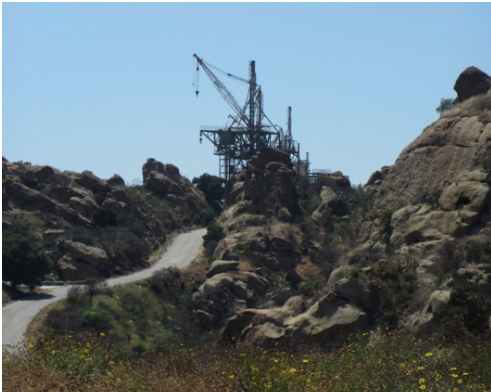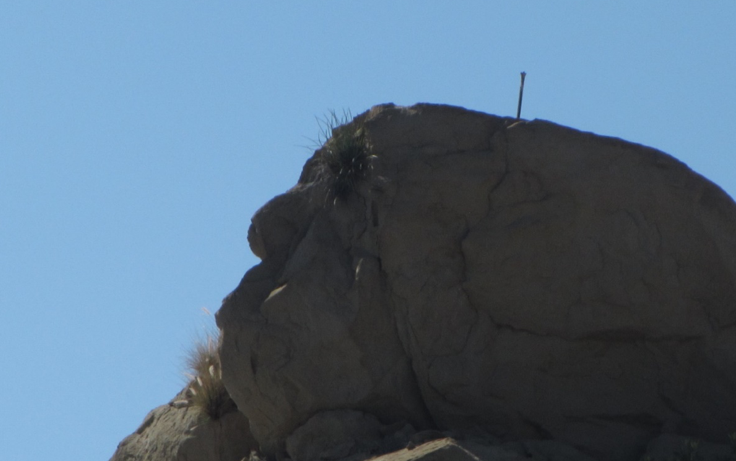CommentsVOICES-The California State Historic Resources Commission (SHRC) voted unanimously on Friday, August 14, 2020, to send a Motion to the State Historic Preservation Officer (SHPO) that the Santa Susana Field (SSFL) complete 2850 acres met the Criteria A: Religious requirements for a Traditional Cultural Property.
The SHPO would be directed by that Motion to then provide input to NASA to submit the application to place the SSFL property on the National Historic Register as the Burro Flats Cultural District.
This action, this Commission recognized, was the right action to take at the right time because of the issues regarding social justice and social injustice being discussed Worldwide today.
I call this action one step in a long process for humankind -- for the rights of those of people some of whom continue to be discriminated against today. I believe that it is not unlike the quote attributed to Neil Armstrong: “That’s one small step for man, one giant leap for mankind.”
Many Thanks!
Many people need to be recognized for taking this one small step. I want to thank the SHPO for presenting this Nomination to the SHRC as a Traditional Cultural Property. The SHPO and the Staff of the Office of Historic Preservation are a part of the California State Parks system. The SHPO, the Office of Historic Preservation employees, the SHRC and their employees, all have access to the unredacted application for this site and the supporting documentation. These documents by law must be held in confidence for the protection of the locations of the archaeological sites, their locations, and the significance of those locations.
I want to thank the Commissioners for approving this Nomination, and for their recognition that this is a Sacred site to many different tribes – many of whose members spoke about the site that day.
I also want to thank the Native Americans – both from the Santa Ynez Band of Chumash who asked NASA to take many steps over a number of years because they had filed Sacred Lands forms for this site a number of years before. It was stated at that meeting that there was a letter from the Native American Heritage Commission that stated that this property was listed as Sacred Lands.
I particularly want to thank the Tribal Leaders and tribal members who made short videos talking about the significance of the whole SSFL site to them.
Thank you to the archaeologists and other anthropologists who signed a letter with more than 70 signatures in support of the TCP.
And finally, thank you to the people who took a lot of hours from their day to listen to this meeting which included potentially 50 people wanting to make public comments, and made comments in support of this nomination.
“Burro Flats Cultural Range. Natural caves and rock shelters are scattered throughout the area. The property is significant for its archaeological sites and natural features described in stories important to the history of the local Native American community, for its remarkable examples of prehistoric Native American rock art that possess high artistic value and are important representatives of the aesthetic and possibly religious values of the Native American groups who created them, and for the district’s association with ceremonial solstice events.”

A history of the Traditional Cultural Property nomination
NASA Santa Susana Field Laboratory has been guarding the Burro Flats Painted Cave site which is on their portion of the SSFL property for decades. This site is already on the National Register of Historic Places and the California Register of Historic Places. See the Santa Susana Field Laboratory Archaeological Resources Survey.
NASA SSFL was obligated to go through both the National Environmental Protection Act (NEPA) process as well as the Section 106 process to determine the environmental impacts of cleaning up the portion of the SSFL site that they are responsible to clean as the last Federal agency to control that Federal property.
During the Section 106 Consulting process, discussions were held with members – some of whom were Native Americans, some archaeologists, and others were other interested parties in determining what should be preserved in terms of the structures (historical criteria) on the NASA portion of the property, as well as protection of the cultural resources (archaeological).
At various points in time, NASA would release redacted cultural resource surveys of their property. Over the last decade or more, numerous archaeological surveys have been done, not only on the NASA portion of the SSFL site.
The Department of Energy (DOE) at the SSFL site was also obligated to go through the same NEPA and Section 106 processes to determine if any of their structures were historical and if there were any cultural resources in the areas that they are obligated to remediate.
Finally, The Boeing Company who owns about 2400 acres of the 2850-acre site was obligated to do archaeological surveys on their portion of the site which they are obligated to clean.
These archaeological surveys done by all three Responsible Parties is what combined to make a total of 117 known archaeological sites and one object.
The Next Step
NASA will ideally submit the Nomination of the Burro Flats Cultural District to the National Parks Service.
The Outcome
Ideally the State and Federal Elected Officials who represent local tribes in the Los Angeles County, Ventura County, Orange County, and San Diego County areas will support the Nomination of this property to the National Register of Historic Places.
Elected officials, agency leaders, and stakeholders must realize that whether this site is placed on the historic register at this time, the Responsible Parties at the SSFL site must treat the site as if it was on the Historic Register, and they must do the cleanup in a manner that is protective of the entire site.
The Responsible Parties will be obligated to have archaeological monitors as well as Native American monitors on site throughout the cleanup process.
What the California State Historic Resources Commission did was “Empower” the Native Americans. They said that cleanup was not under their purview, and they left it up to the Tribes to recommend the appropriate cleanup and mitigation efforts.
Thank you once again to the SHPO and the California State Historic Resources Commission for taking this position.
(Chris Rowe, a former health care employee who has worked at Northridge Hospital, Tarzana Medical Center, and West Hills Hospital has a B.S. in Health Education. She is a 42-year resident of West Hills. She has written for the Los Angeles Daily News, RonKayeLA.org; OurLA.org; and CityWatch. She has a blog on the USC/ Annenberg Center for Health Journalism website and can be reached at [email protected]) Photos: Outcrop formations, by Bruce Rowe. Prepped for CityWatch by Linda Abrams.
















